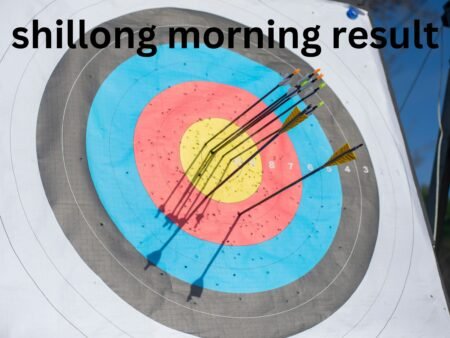When you first sit down at a poker table, the terminology can feel like a secret language. One term you’ll hear often is “big blinds.” But what does it entail, and why does it matter? Whether you’re a newbie or a seasoned player, understanding the ins and outs of big blinds is crucial for crafting effective strategies during play. So, let’s break it down together!
What is a Big Blind?
At its core, the big blind is a forced bet that players make before any cards are dealt. Usually, the player sitting two positions left of the dealer puts up this bet. But here’s the kicker: the big blind amount is typically double that of the small blind. For example, in a $1/$2 cash game, the small blind would be $1, and the big blind $2. This setup establishes the initial investment and gets the action going.
The Role of Big Blind in Poker Games
Now you might wonder, why the big blind? Well, it creates a sense of urgency and encourages players to get involved. By forcing players to put money in the pot before seeing their cards, it motivates everyone to act rather than just sitting back. Those who are “in the blind” will often put in far more chips than those who are not, leading to lively action at the table.
History of the Big Blind
Interestingly, the concept of blinds dates back to the origins of poker itself. While earlier versions used antes (a contribution from every participant), the introduction of blinds helped streamline games. They allow pots to grow larger while accommodating the rising stakes over time. The blend of tradition and strategy makes blinds a fascinating aspect of poker history.
Big Blind vs. Small Blind
While both the small blind and big blind are forced bets, they possess some functionality and implications in-game.
Key Differences
- Amount: As mentioned earlier, the big blind is double the amount of the small blind.
- Position: The small blind always acts first in the post-flop action, while the big blind acts last when it’s time to call or raise.
- Invalid Split: The small blind has no claim over the pot like the big blind does, as they put in their bet first without knowledge of future actions.
Understanding these differences is key to making informed decisions throughout the game.
How Big Blinds Work in Different Formats
The big blind does not function the same across all poker games. It varies depending on whether you’re playing cash games or tournaments, which can significantly affect your strategy.
Cash Games
In cash games, the blinds remain constant. Players simply adjust their strategies based on their stack sizes. For example, with an effective stack of $300 at a $1/$2 cash game, you might feel more inclined to defend your big blind as opposed to a $0.50/$1 game with only $100 in your stack.
Tournament Play
Tournaments are a whole different ball game. Here, blinds increase over time, affecting player dynamics and strategies significantly. Players might find themselves hanging on with low stacks or making bold plays when blinds become steep, adding layers of strategy and thrill to the game.
Blinds Structure in Tournaments
When playing in tournaments, be cognizant of the blind structures. For instance, as the levels increase, so too might the amount in the big blind. This can have a drastic effect; players must adjust their game or risk getting blinded out.
Strategies for Playing Big Blinds
Knowing how to approach the big blind can be the difference between winning and losing significant pots.
Defending Your Big Blind
If you find yourself in the big blind position, don’t just fold every time someone raises. Instead, consider defending it against early raises with a strategy that fits your playing style and hand range. This tactic can help you retain chip value while also pressuring opponents.
The Right Approach to Raising
When it’s your turn, do you simply call? Ramp it up a bit! Raising from the big blind can both protect your hand and scare off players who might attempt to steal your blind. It establishes you as a formidable opponent in the game.
Common Mistakes
It’s easy to make mistakes from the big blind. Keep the following in mind:
- Don’t overvalue hands just because you’re in the big blind position.
- Avoid being too passive; this can lead to losing potential pots.
- Remember to read your opponents—knowing their tendencies can guide your decisions immensely.
The Importance of Position Relative to Big Blind
Your seating position in relation to the big blind can influence your gameplay significantly.
Early Position vs. Late Position
Players in early position must be cautious, as they’ll face all. Conversely, late-position players can often play wider ranges because they can see how aggressive others are before making their move.
Adjusting Your Game Based on Position
When you’re in the big blind, consider the player dynamics at the table. If the players behind you are overly aggressive, tighten your hand range to ensure you’re not overcommitted. If they’re passive, you can afford to play a bit looser, applying pressure whenever you can.
Conclusion
In conclusion, mastering the dynamics of the big blind can elevate your poker game immeasurably. It’s a unique position that offers both challenges and opportunities. By understanding its role—whether playing cash games or tournaments—and honing your strategies for defense and offense, you set yourself up for success at the table. So next time you’re in the big blind, remember the opportunity for growth and tactical advantage it presents.
FAQs
FAQ 1: Can I win with a bad hand in the big blind?
Absolutely! Sometimes, a bad hand can turn into a winning strategy if you play it correctly. It’s about reading your opponents and knowing when to be aggressive and when to fold.
FAQ 2: How does blind level affect my strategy?
As the blind levels increase, you generally need to adjust your approach. Your stack-to-blind ratio becomes crucial, affecting your decisions around when to call, raise, or fold.
FAQ 3: What should I do if I face a big raise from the button?
Evaluate your hand critically and take into account the player’s tendencies. If they’re aggressive and you have a reasonable hand, consider defending your big blind. But don’t hesitate to fold if the situation looks risky.
FAQ 4: How do I calculate pot odds from the big blind?
To calculate pot odds, compare the size of the pot to the size of the bet you need to call. This can guide your decision on whether it’s worth it to continue with the hand based on the odds of completing a winning hand.
FAQ 5: Are big blinds always profitable?
While big blinds can offer significant value, they aren’t always profitable by default. Your decisions after the flop, the strength of your hand, and the behavior of your opponents all play crucial roles in determining profitability.









